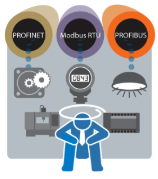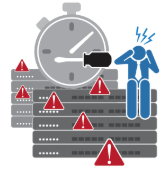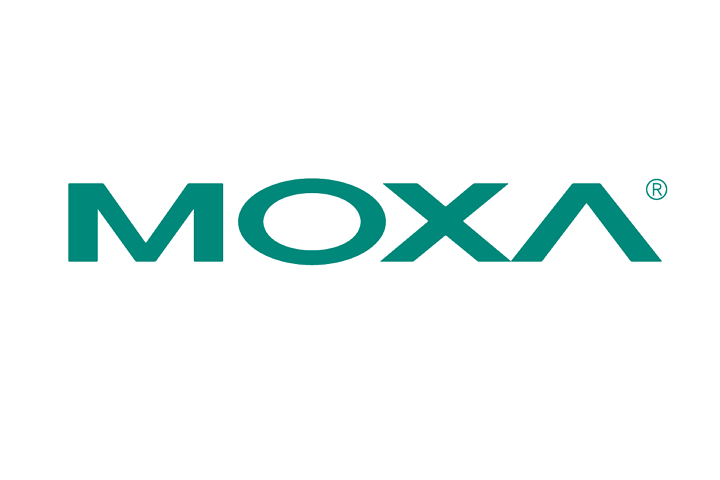Efficiency reigns supreme in networks universally. Ultimately, it stands as the primary gauge of any operation’s triumph. Not surprisingly, the pursuit of optimized efficiency aligns closely with rapid transformations and technological advancements. It is widely known that these developments position Industrial Internet of Things (IIoT) technologies at the core of a surge of creativity in network connectivity and infrastructure.
Unquestionably, with novel prospects come fresh challenges. These obstacles may differ from one sector to another, yet the central concern that consistently emerges is establishing dependable networks that facilitate enhanced productivity and superior energy conservation. The reality that system prerequisites vary from project to project further complicates matters since a universal solution applicable across different network architectures does not exist. Nonetheless, the essential point is that system integrators must ensure that their networks, particularly those serving critical missions, can endure connection disruptions and adverse environmental circumstances.
This article outlines three viable approaches to guaranteeing that factory automation networks offer steadfast, uninterrupted connectivity.
Networks that Generate Value for Factory Automation
Per a report from McKinsey Global Institute, IIoT applications focused on operational enhancement are anticipated to yield value ranging from US$633 billion to $1.8 trillion annually in the factory sector by 2025. Post operational enhancement, the subsequent valuable IIoT applications in factory automation are predictive maintenance and inventory optimization. However, before actualizing these benefits, the industry must overcome the following challenges:
Interoperability
For IIoT applications to be embraced in a factory environment, network interoperability stands out as the most intricate issue, considering that a factory typically comprises numerous intricate systems and applications. Enhancements in interoperability are essential for both machine-to-machine communications and handling vast data streams from the production floor.

Approach: To boost productivity and reduce operational expenditures, plant operators opt for industrial Ethernet gateways or multiprotocol-capable switches, as opposed to embedded computers, to combine isolated fieldbus systems for centralized control and monitoring. Gateways and multiprotocol switches offer cost efficiency and easy deployment, fostering improved collaboration among diverse systems while optimizing PLC performance and manageability.
Dependability
Bustling and clamorous manufacturing environments can jeopardize network dependability. Given that a factory network framework comprises numerous networking devices, network reliability hinges on device endurance, network redundancy, and cybersecurity capabilities.

Approach: Network devices like Ethernet switches, wireless devices, and secure routers should be engineered to withstand extreme temperature fluctuations, shocks, vibrations, EMI, and other challenging conditions. Swift activation of a backup connection upon network failure is critical for ensuring network durability, irrespective of whether the network operates in a multicast or unicast scenario. VPNs, routers, and NAT protection are indispensable for mission-critical devices and communications, and having Modbus deep-packet inspection enhances factory-floor communication.
Integration of Systems
SCADA and information network systems typically function as parallel platforms, and for IIoT applications, the integration of SCADA systems with information network systems will grow increasingly vital.

Approach: Instead of utilizing parallel SCADA and IT management systems, sophisticated industrial-grade network management systems can act as an OPC server to keep SCADA systems apprised of network status, while graphical user interfaces offer engineers intuitive network visibility for swift configuration and VLAN management. Additionally, mobile applications are now indispensable for instant network monitoring, even while on the go.
Data is at the forefront of the IIoT realm of interconnected devices. The strategies discussed here concerning interoperability, dependability, and system integration will facilitate the transfer of data from the network edge to a control hub for deriving valuable insights.
To discover how to implement intelligent information sharing across your facility for heightened productivity and energy efficiency, explore our smart factory networks webpage. Further, peruse this FAQ featuring five crucial queries to pose prior to IIoT implementation.
- Not Only for Automobiles: Discovering CANbus Technology in Various Industrial Settings - October 29, 2024
- Boost Your Network Performance: An Exciting Manual to PoE Switches! - September 10, 2024
- Understanding Gigabit Switches: Industrial vs Regular Gigabit - September 4, 2024


